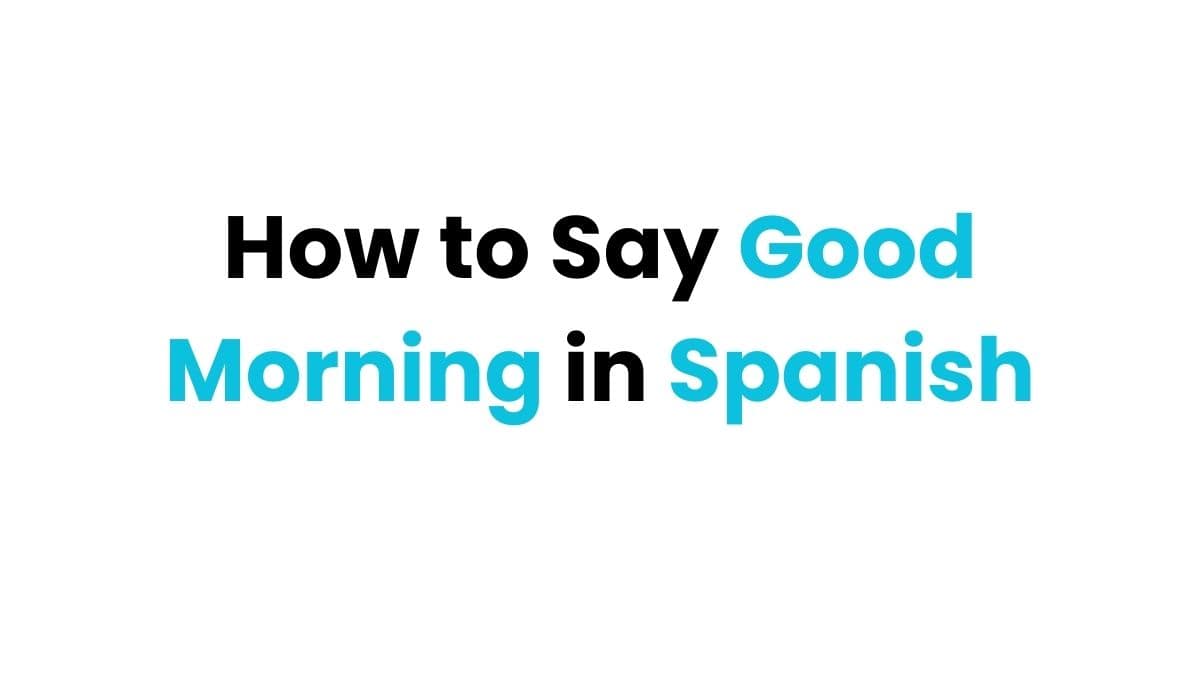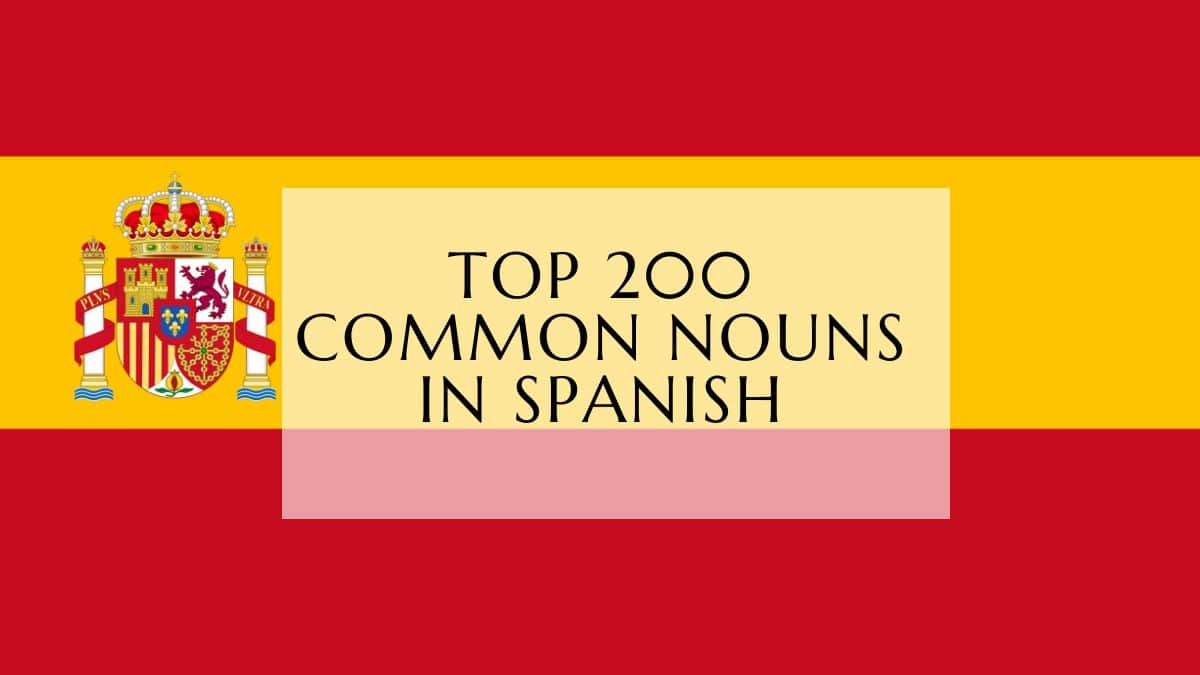Saying “good morning” in Spanish is key in daily talks. If you live or work in a Spanish-speaking area, you need to know how to say it. It makes your interactions smoother, whether you’re getting coffee, saying hello at work, or chatting with locals.
This guide covers everything from “buenos días” (good days) to casual greetings. Learning these phrases will help you greet the day right and impress others.

The Basics: Buenos Días and Common Variations
The most common way to say “good morning” in Spanish is “buenos días”. It means “good days.” This phrase comes from “buenos días os dé Dios”, which is “may God give you good days.” It’s always plural because “buenos” goes with “días”, which is masculine in Spanish.
There are other ways to greet someone in the morning too. You can say “¡Buenos!” (Morning!), “¡Buen día!” (Good day!), or “Buenos días a todos” (Good morning to everyone).
| Greeting | Meaning |
|---|---|
| Buenos días | Good morning |
| ¡Buenos! | Morning! |
| ¡Buen día! | Good day! |
| Buenos días a todos | Good morning to everyone |
“The most common way to say ‘good morning’ in Spanish is ‘buenos días,’ which directly translates to ‘good days.'”
Formal and Respectful Greetings
Saying “good morning” in Spanish can change a lot based on who you’re talking to. To show more respect, you can use titles with your greetings.
For instance, “Buenos días, maestra” (Good morning, teacher) is great for educators. “Buenos días, señor” (Good morning, sir) is perfect for older gentlemen. And “Buenos días, señoras y señores” (Good morning, ladies and gentlemen) is ideal for groups in formal settings.
These greetings show you respect and understand social rules. They’re key in professional or academic settings. Here, being polite and courteous is very important.
| Formal Greeting | Translation | Appropriate Usage |
|---|---|---|
| Buenos días, maestra | Good morning, teacher | When addressing an educator or someone in a position of authority |
| Buenos días, señor | Good morning, sir | When speaking to an older gentleman or someone deserving of respect |
| Buenos días, señoras y señores | Good morning, ladies and gentlemen | When greeting a group in a formal setting, such as a business meeting or event |
Learning these formal greetings in Spanish can make you more confident in social and professional situations. It shows you care about cultural norms and respect others.
Good Morning in Spanish
The most common way to say “good morning” in Spanish is “buenos días,” which means “good days.” This greeting is widely used in Spanish-speaking countries. It’s key for anyone wanting to communicate in Spanish.
“Buenos días” is used before noon to wish someone a good morning. It’s also a polite way to greet someone, especially in Mexico. In some parts of Spain, people might say “Buenas mañanas” instead, but “buenos días” is more common.
For a casual good morning, people might say “buen día,” “buenas,” or “¿Qué tal tu mañana?” (How’s your morning?). Adding titles like señor, señora, or señorita to “buenos días” makes the greeting more formal.
When saying “good morning” in Spanish, you might also use handshakes, hugs, or cheek kisses. These actions depend on the local customs. For birthdays, you can say “feliz cumpleaños” (happy birthday).
Romantic Good Morning Greetings
Make your special someone’s morning magical with a romantic good morning in Spanish. You could say “Buenos días, mi amor” (Good morning, my love), “Buenos días, hermosa” (Good morning, beautiful), or “Buenos días, guapo” (Good morning, handsome).
These sweet greetings show your love and start the day off right. They’re perfect whether you’re together or apart. They add a loving touch to your morning.
It’s important to be sincere when you say these greetings. Adding a bit of Spanish to your day can make your partner’s day brighter. It also brings you closer together.
| Romantic Spanish Greeting | English Translation |
|---|---|
| Buenos días, mi amor | Good morning, my love |
| Buenos días, hermosa | Good morning, beautiful |
| Buenos días, guapo | Good morning, handsome |
“Expressing your affection and appreciation in the morning can set the tone for a wonderful day together.”
Casual and Regional Expressions
There are many ways to say “good morning” in Spanish, beyond the formal “buenos días.” You can say ¡Buenos! (Morning!), ¡Buen día! (Good day!), or levántate y brilla (wake up and shine). You can also use ¡Que tengas un buen día! (Have a good day!) or ¡Despierta, bella durmiente! (Wake up, sleeping beauty). These greetings are perfect for casual moments or with friends and family.
Other fun ways to greet someone in the morning include ¡Arriba! (Get up!), ¡Despierta! (Wake up!), or ¡Ya amaneció! (It’s morning now!). You can also ask about someone’s sleep with questions like ¿Cómo amaneciste? (How did you wake up?) or ¿Cómo dormiste? (How did you sleep?). Asking if they slept well, ¿Dormiste bien?, or if they rested, ¿Descansaste?, shows you care. You can even ask if they dreamed of angels, ¿Soñaste con los angelitos?.
To start the day on a bright note, try saying ¿Qué tal va tu mañana? (How’s your morning going?). Or say ¡Que tengas una bonita mañana! (Have a beautiful morning!) or ¡Qué hermosa mañana! (What a beautiful morning!). These phrases bring a sense of hope and positivity to the morning.
Oualid Cheddadi is the founder of Lingualid, a platform that inspires independent language learners worldwide, regardless of the language they are learning. The name “Lingualid” is derived from the Portuguese word for “language,” “língua,” and the last three letters of Oualid’s name, “Lid.”



